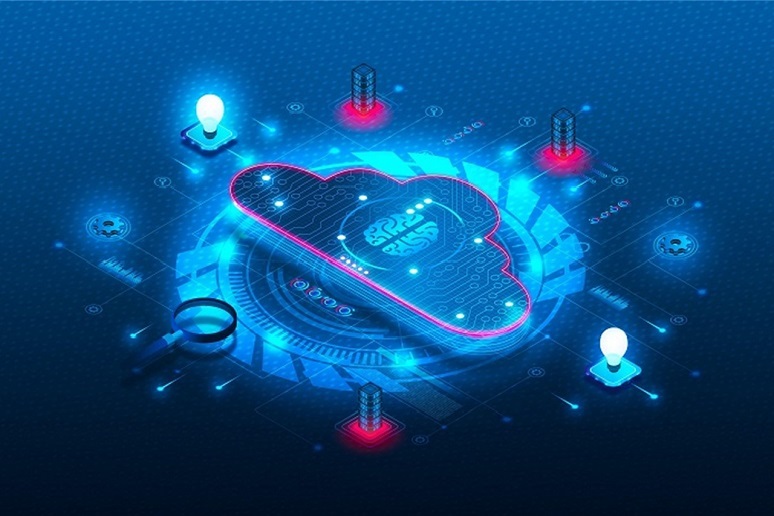We are on the cusp of a boom for CCaaS. Like most sectors of enterprise software, contact centers have been migrating to cloud-delivered SaaS solutions, albeit more slowly than the other areas of enterprise communications. That’s in-part because contact centers are more complex, and their buyers tend to be more cautious.
While CCaaS adoption has been strong with small to medium businesses, the larger, more complex deployments have only started to migrate. These customers have mostly remained loyal to legacy, single-tenant solutions for various reasons. However, CCaaS has been where the innovation is occurring, especially during the pandemic. Over the past few years, we saw broad changes in how customers expect to interact with their brands. Several high-profile, large enterprise CCaaS wins indicate that enterprises are warming to multi-tenant, public CCaaS solutions.
The sector is poised to accelerate even further after some surprising recent announcements from Avaya and Genesys. In July, Avaya warned investors that it would miss the quarterly targets it had already lowered. It expected to file its actual results in August, but still hasn’t done so. Nor has the company provided its analysis of what caused the shortfall. The numbers it did reveal have raised concerns about its ability to continue as a going concern.
Avaya predominately offers single-tenant solutions for unified communications and contact centers. The company states it serves over 90,000 customers worldwide and that it is the global leader in contact center solutions. Due to the uncertainties about Avaya’s future, Gartner Research issued an advisory to its customers to mitigate their exposure during this period of uncertainty. This included delaying investments in products and services, and considering certified third-parties for maintenance and support.
It wasn’t long ago that Genesys and Avaya quarreled over the size of their research and development (R&D) investments. Today, there’s very little investment or innovation occurring in single-tenant contact centers. This month,
Genesys announced it will no longer sell its Multicloud CX on AWS/Azure (Engage Cloud AWS or Azure) and Multicloud CX private edition solutions to new customers. CEO Tony Bates
posted that Genesys will focus “all of its innovation, investment and resources” on its multi-tenant CCaaS solution. It was a surprising move as Genesys was a reasonable heir apparent to Avaya’s single-tenant base. Now, the two market leaders are effectively forcing their customers into CCaaS.
There’s no shortage of options. There are more CCaaS providers today than any other time. However, it’s also important to consider the new rules of this economy. Access to capital has become difficult, and this has forced a shift away from growth to profitability. Unprofitable providers are in for some challenging times and cutbacks.
Two CCaaS providers well-positioned to benefit from these changes are NICE and Five9. These two providers have been reporting impressive quarterly growth, including large enterprise wins, are profitable, and have avoided layoffs. Neither has lowered their guidance with investors.
NICE CXone holds the top right position in
Gartner’s most recent Magic Quadrant for CCaaS. CXone offers a broad set of features that spans call control and routing, workforce engagement, and rich digital capabilities. NICE takes a proactive approach to digital CX by recognizing customer intent. It recently started using the term
Suiteform to convey that its suite of services has an extensive set of APIs and other capabilities that enable customizations and advanced workflows.
Although Five9 announced a leadership change that caused some investor anguish, the company also reported impressive results. Five9 increased its adjusted earnings guidance for the third quarter to 38 cents a share, up from a 31-33 cents range. Additionally, it expects revenue of around $198 million, a marked increase from its prior guidance of $193 million. Five9 has been steadily reporting significant CCaaS growth in large enterprises, including a single win earlier this year expected to reach annual recurring revenue (ARR) of over $40 million in software subscriptions alone.
However, there are more options to consider. Here are some recent innovations from other CCaaS providers that can also address enterprise needs.
Amazon is rapidly enhancing its Connect solution. Connect integrates with many AWS services, making it a strong fit for organizations hosting their business systems and databases within AWS. Most recently, Amazon announced the general availability of Connect Cases, a feature that allows agents to create, collaborate on, and quickly resolve customer issues that involve multiple conversations and tasks. It offers relevant case details in a single, unified view. Cases is part of the unified agent application that also includes Amazon Connect Contact Control Panel, Amazon Connect Wisdom, and Amazon Connect tasks.
Cisco Webex Contact Center: This year, Cisco has made significant improvements to its Webex Contact Center, including 70 new features and over 100 new APIs. Last year, Cisco acquired IMImobile, which gave the provider extensive expertise in digital channels and CPaaS. The solution set, now known as Webex Connect, complements the Webex Contact Center. At a recent analyst event, Cisco shared that its closed 25 new cloud contact center deals in Q4 greater than $1 million, and now has over 70 Webex Connect customers spending more than $500,000 in ARR.
Dialpad recently announced “Agent Empowerment,” which includes Agent Assist and Dialpad AI QA. These two solutions leverage AI to improve customer engagement. Agent Assist consists of several functions, including knowledge ingestion, AI-driven shortcuts to answers, smart scripts, and automation tools. Dialpad Ai QA Scorecards grade calls in real time. Dialpad has made significant investments to bolster its CCaaS offerings. It acquired
Kare and
Koopid last year and announced AI CSAT earlier this year.
Google has been active in CCaaS for several years with its Contact Center AI (CCAI) suite and ChromeOS desktops.
Google announced a CCaaS partnership with UJET last March, which created the CCAI Platform. This new solution, now generally available, was created to help its CCaaS customers streamline and shorten time to value. It offers a cloud-native CCaaS with deep Google AI integrations. UJET can also simultaneously connect to AWS. It is expected to soon announce incentives for Avaya and Genesys customers.
Google just announced ChromeOS Desk Connectors for RingCentral, NICE, Dialpad, and Edify. This automatically launches a new ChromeOS desktop with each interaction. When agents end the interaction, they can easily close the desk (and all associated tabs) with a single click. Google expects more of CCaaS providers to support ChromeOS Desk connectors soon.
Vonage AI Studio was announced soon after Ericsson completed its Vonage acquisition. AI Studio offers a low code/no code tool to design, create and deploy customer engagement solutions. The tool is designed to reduce barriers to building effective virtual assistants for self-service support, billing updates, appointment scheduling, FAQs, and more. Vonage offers a very strong integration with Salesforce.com.
Large enterprises have slowly begun embracing CCaaS. They were right to wait—the technology has significantly evolved in the past few years—and now appears ready for large, complex implementations today.
But CCaaS can do more than merely recreate what they had before with single-tenant solutions. Modern CCaaS solution offer numerous advantages, including improved availability, better/wider support for omnichannel conversations, extensive use cases of conversational AI technologies, and native support for remote/distributed agents. Many CCaaS solutions offer native WEM capabilities as well. The time is right for enterprise migrations, and that means better CX for many of us.
Dave Michels is a contributing editor and analyst at TalkingPointz.










